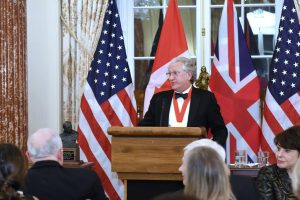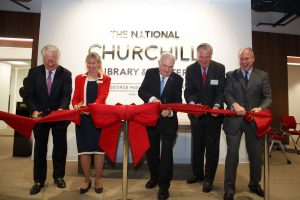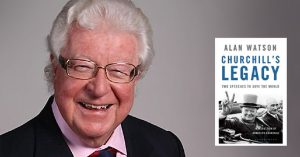
Bulletin #101 - Nov 2016
Churchilliana
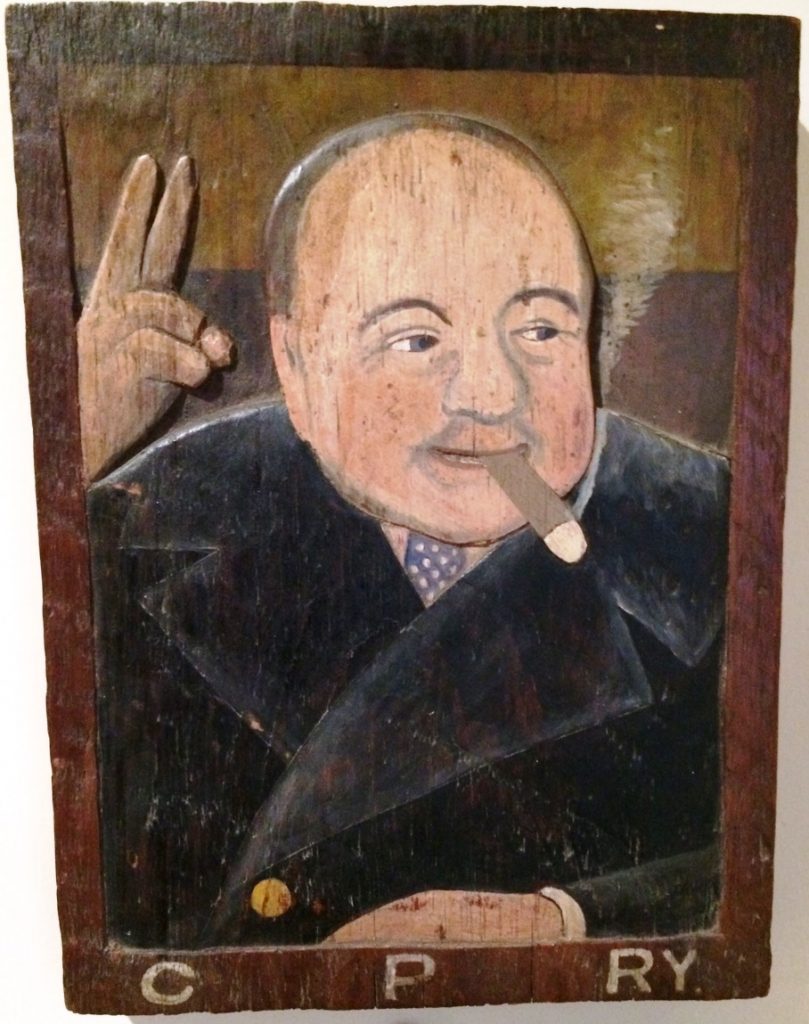
November 3, 2016
Churchill Collectables: Canadian Pacific Railway Plaque
By BRIAN KRAPF
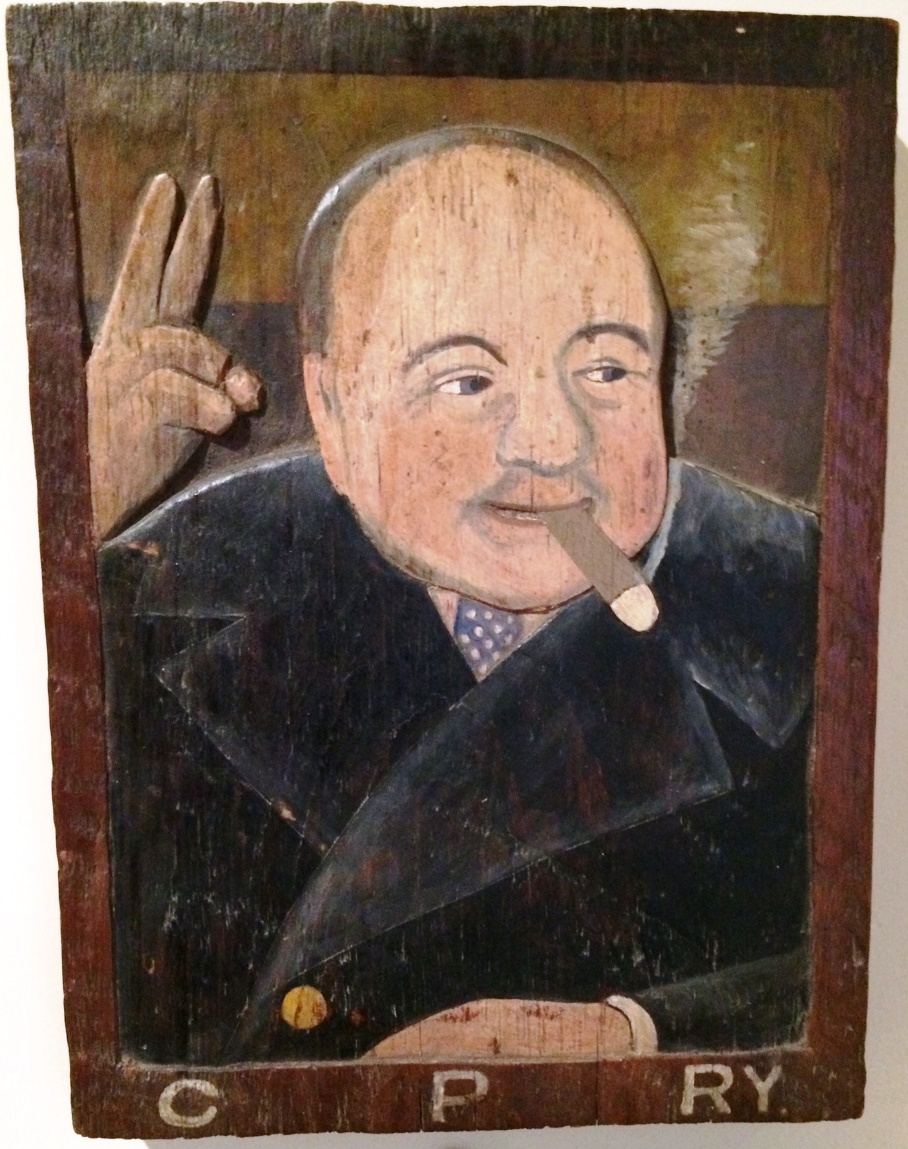
Handmade wartime patriotic memorabilia comprises its own recognized genre and is competitively pursued by collectors of history and art alike. These pieces are labeled “trench art” when they were made by active duty servicemen. Similarly, they are called “after hours ware” when made from shop scrap by factory workers. When made by homefront citizens, these pieces are called “folk art.” Whatever label or classification is applied, the underlying basis remains the same; someone utilized their time and skill to craft a one-of-a-kind item expressing their patriotism, loyalty, and love of country. The Churchill plaque pictured here is a fine and rare example of wartime after hours ware.
The initials at the bottom represent the Canadian Pacific Railway. Measuring 10” x 12” and was hand carved from a pine plank and then painted. Such planks were heavily utilized in rail yards, and a piece this small would have been discarded. A CPR worker likely found the plank in a scrap heap and decided to make the carving. The fact that this piece bears attribution to CPR is quite relevant. As one might guess, CPR’s wartime involvement included significantly more than providing executive railway cars for the 1943 Quebec Conference. Indeed, CPR’s wartime service stands as a sterling example of a company’s wartime loyalty and sacrifice.
By the outbreak of the Second World War, CPR had vast experience in operating during wartime conditions. The company had transported freight, munitions, soldiers, and armaments during the 1885 Riel Rebellion, the Boer War, and the Great War. At the commencement of the Second World War, the entire CPR network became dedicated to the Allied war effort. Their work extended far beyond the movement of overland freight and passengers. Twenty-two CPR ships were utilized during the war; twelve were sunk, including CPR’s Titanic-sized passenger liner, the Empress of Britain II. Likewise, CPR developed the “Atlantic Bridge,” used to ferry bombers across the Atlantic to Britain. CPR also established pilot training schools and created Canadian Pacific Air Lines in 1942. Likewise, CPR devoted shops in Montreal and Calgary to building munitions, naval guns, and tanks. By war’s end, these shops had produced 1,420 Valentine tanks; as well as numerous ship engines, gun mounts, anti-submarine devices, and landing craft.

2024 International Churchill Conference
We do not know who crafted this plaque. However, it is safe to assume that it was one of over 21,000 wartime employees of CPR. The plaque represents so much more than a carved Churchill image. It represents the time and skill someone took to express his patriotism, support, and loyalty through a unique art form. That, to me, is the true essence of this piece and I am honored to include it in my collection of Churchilliana.
Brian Krapf formerly served as President of the American Political Items Collectors, which is devoted to the preservation and study of America’s political heritage. He has been honored with APIC’s highest award: induction into the organization’s Hall of Fame. Items from the Krapf collection have been featured in History Channel documentaries and also in major print media publications. He has also served as a national advisor to eBay in the areas of security and fraud detection, and he designed eBay’s current political memorabilia listing categories.
Subscribe
WANT MORE?
Get the Churchill Bulletin delivered to your inbox once a month.
